For better or worse, much of London has undergone substantial gentrification in recent years, but Hampstead remains a conspicuous flavour of the old school. Perched on an elevated spot in north London, 20 minutes by tube from the city centre, the well-heeled district retains much of its original village character, with the High Street alone home to no less than 18 grade II listed buildings.
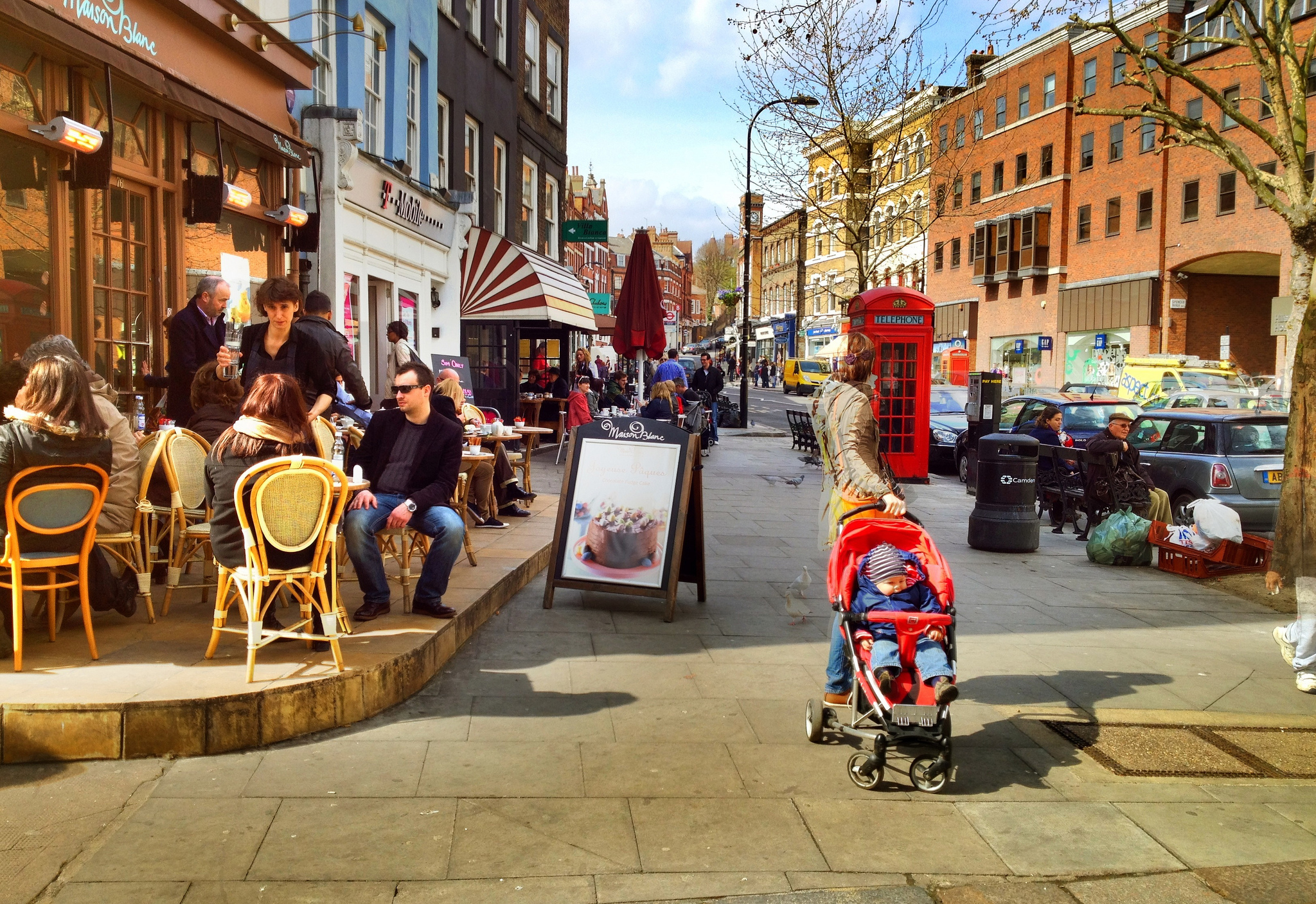
An every-day scene in Hampstead village, with cafe-dwellers and pedestrians going about their business (Photo: Siim Teller via Flickr)
Oozing history and charm, Hampstead more than anything is simply a delightful place to potter. Visitors and residents enjoy wandering along its pretty narrow lanes lined with Victorian-era terraced houses before stopping for refreshments in a tucked-away gastropub or quaint street café. Many inevitably gravitate to the magnificently sprawling Hampstead Heath, one of London’s finest parks, with sensational views across London from Parliament Hill, a swimming pond and a cute tearoom at Kenwood House (Hampstead Lane), one of London’s great Regency homes.
It is this former stately home that provides the main focal point of the Heath, with summer concerts held on the vast lawn overlooking the house and a well-regarded art gallery inside, featuring a prominent collection that includes Rembrandt’s Self-Portrait. During summertime, the knoll that leads from Kenwood down to a picturesque pond swarms with visitors enjoying picnics and ball games.
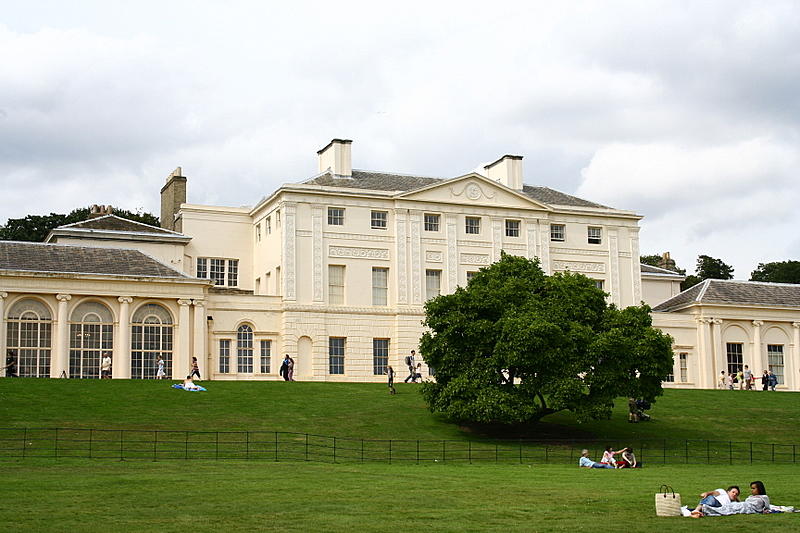
Kenwood House, a former stately home situated on the northern boundary of Hampstead Heath (Photo: citystreetscene via Flickr)
Hampstead also lays claim to a remarkable alumni of residents, both past and present. But while nowadays you can expect to bump into Premier League footballers, television stars and other pop culture icons, a century ago you were more likely to rub shoulders with titans of intellectual, liberal, artistic and literary life. George Orwell, Charles Dickens, Sigmund Freud, Aldous Huxley, DH Lawrence, Robert Louis Stevenson, Evelyn Waugh, H.G. Wells, T.S. Eliot and Henry Moore are just some of the notable cultural figures to have called Hampstead “home” down the years – many of whose legacies still burn brightly here, not least in the commemorative Blue Plaques nailed to the exterior of their former abodes.
In fact, a number of them chose their final resting place to be moments away from their front door. At St John-at-Hampstead churchyard (Church Row), gravestones bear the illustrious names of John Constable and Gerald du Maurier (actor and father of Daphne du Maurier) among others and throughout the year visitors can be found here peering with curiosity at the epitaphs of the site’s distinguished deceased.

A Blue Plaque for author Robert Louis Stevenson outside his former residence at 7 Mount Vernon in Hampstead (Photo: Peter O’Connor aka anemoneprojectors via Flickr)
Among the Hampstead homes once occupied by famous individuals, two have been converted into museums dedicated to their former denizens. Located on a residential street, 15 minutes’ walk from the High Street, is the Freud Museum (20 Maresfield Gardens); the house in which Austrian psychoanalyst Sigmund Freud lived with his family during the last year of his life. He also maintained his practice here and saw a number of his patients for analysis, treating many of them on a couch that remains the house’s centrepiece attraction to this day. After Sigmund’s death, his daughter Anna continued to stay here until she too passed away in 1982. It was her wish that after her death it be converted into a museum, and so it was that in July 1986 it opened to the public. The original study, library, hall and the dining room all remain, while contemporary additions include a video room and a museum shop on the ground floor.
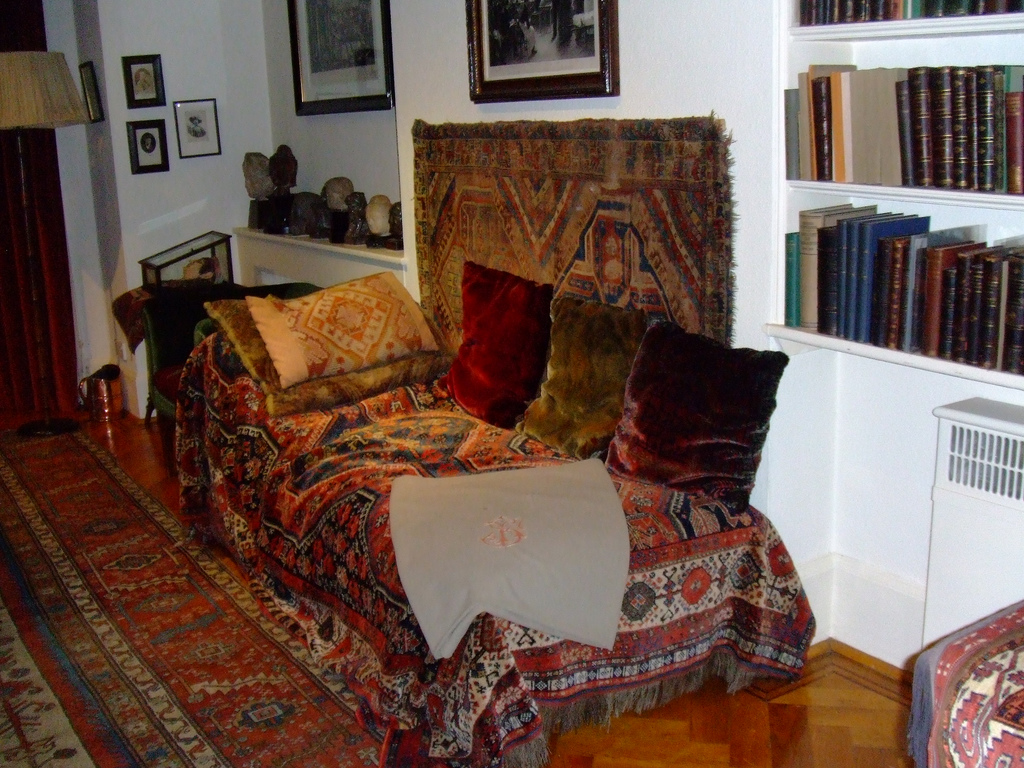
Freud’s psychoanalytic couch at the Anna Freud Museum (Photo: OKie surfer via Flickr)
Keats House (10 Keats Grove), a stunning Regency villa once inhabited by the Romantic poet John Keats, is located just outside the southern borders of Hampstead Heath and invites visitors to explore the life and work of Keats through exhibits of his original manuscripts and artefacts. The house also hosts special events throughout the year, from poetry performances to family-themed days that offer a great way to introduce kids to the work of one of England’s most important poets.
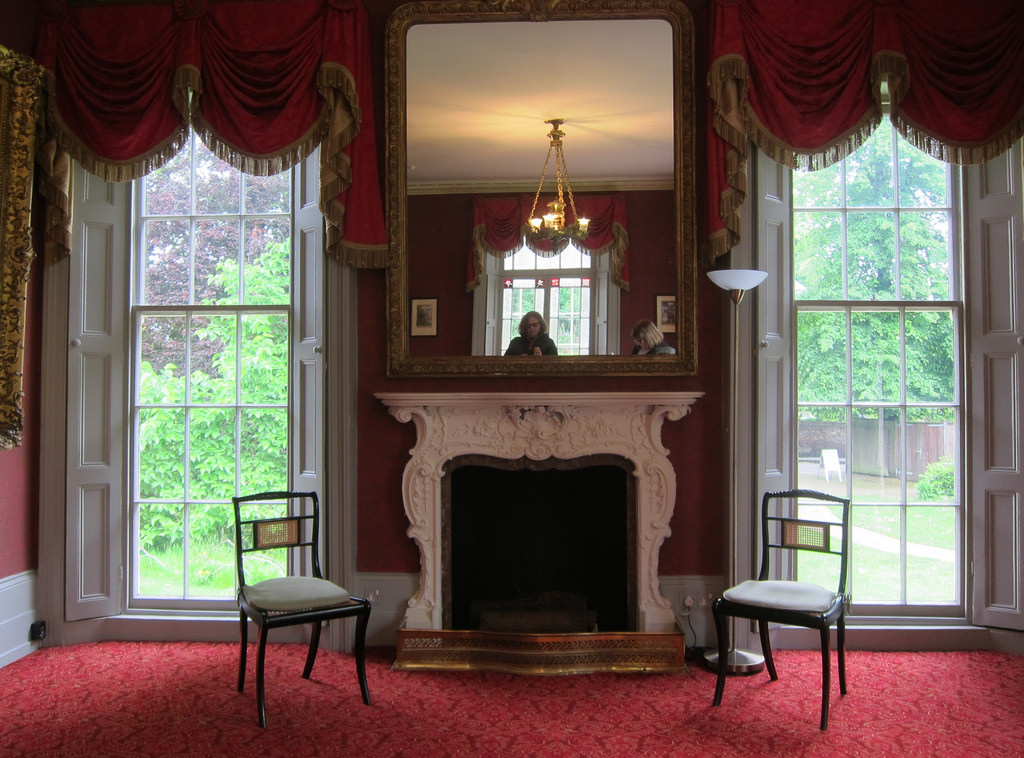
The interior splendour at Keats House (Photo: Dora Maus via Flickr)
As well as museums, there are numerous other buildings of historic interest in Hampstead and several highly regarded art galleries. Goldfinger House (2 Willow Road) is a National Trust property that sits as testimony to the talents of Hungarian-born modernist architect Ernő Goldfinger. Completed in 1939, the home is open to the public and features many of the treasures, furniture and objets d’art of one of the most influential figures in British architectural history.
Burgh House (New End Square), meanwhile, is a beautiful, Grade I-listed, Queen Anne building in which Hampstead Museum can be found. There are permanent and temporary exhibits on local history, art and culture, while a quaint cafe occupies the basement, with outside seating in the gardens. Half-a-mile south of the High Street, on Finchley Road, is Camden Arts Centre (Arkwright Road), a much-loved community arts centre with a bookstore and studios. In central Hampstead, Catto Gallery (100 Heath Street) is a prestigious fine art gallery specialising in contemporary art. The gallery also hosts regular exhibitions showcasing work by leading artists from around the world.
Hotels
While there are a smattering of chain hotels in surrounding districts, the bulk of the accommodation options in and around Hampstead are of the guest house or ‘bed & breakfast’ variety. One of the most popular is Dillons Hotel (21 Belsize Park), situated in leafy Belsize Park just 15 minutes’ walk from Hampstead High Street. A family-run B&B, the property has 15 rooms and provides affordable, comfortable accommodation that is within easy reach of all that Hampstead has to offer. Belsize Park and Swiss Cottage Underground Stations are both within five or six minutes’ walk, as is Finchley Road Bus Stop for express coaches to Stansted and Luton airports.
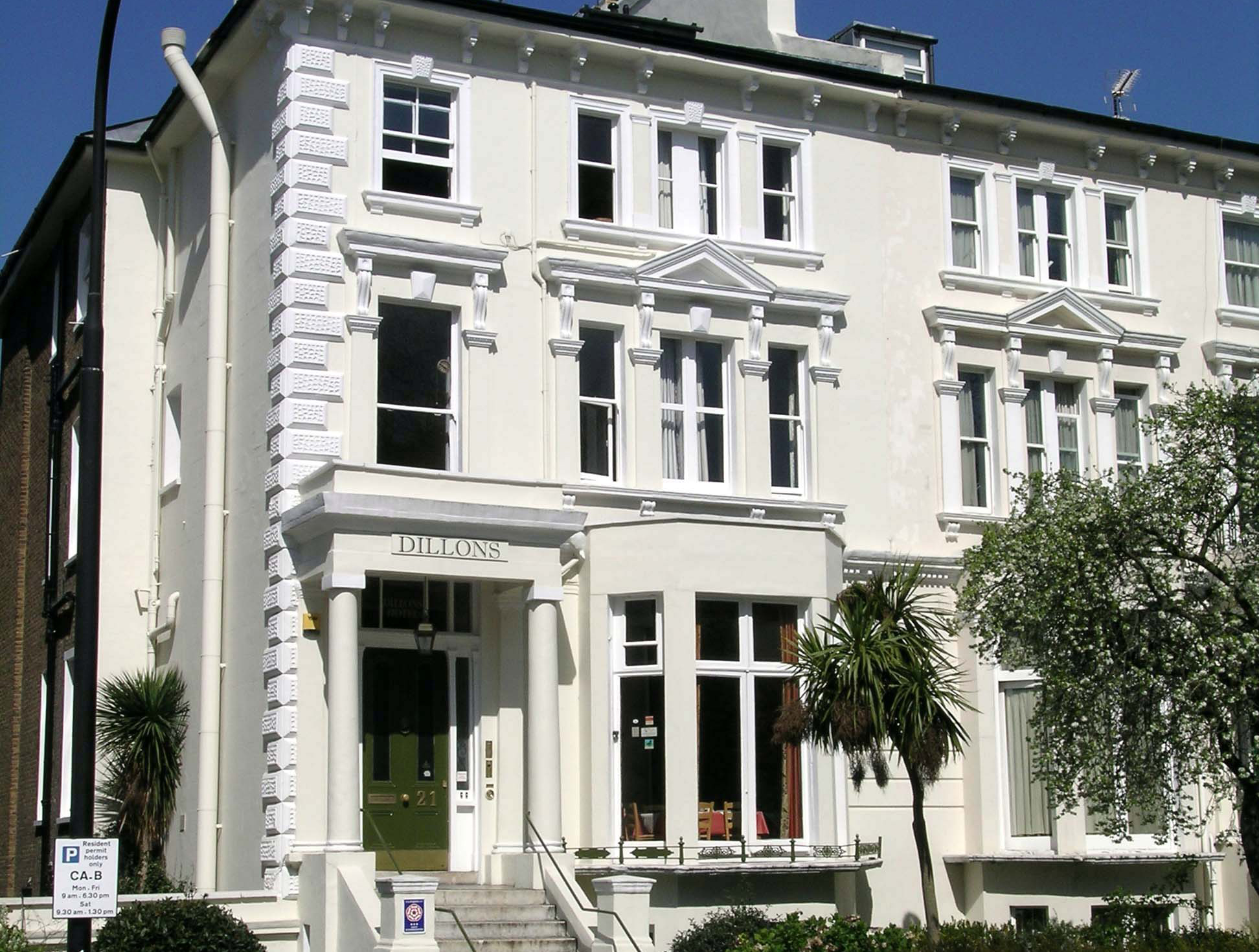
The Georgian exterior of Dillons Hotel (Photo: Dillons Hotel)
For those seeking a slightly more upscale option, set in the heart of Hampstead Village is La Gaffe (107-111 Heath St), an award-winning hotel and Italian restaurant. Family-run, the hotel prides itself on its warm, hospitable and relaxed atmosphere and is an ideal choice for those keen to be based in a central location. The 22-bedroom Haverstock Hotel (154 Haverstock Hill), also in Belsize Park, is another fine choice. Previously a pub called The Haverstock Arms, it is now a tastefully restored boutique hotel featuring stylish accommodation and is just over 15 minutes by foot from central Hampstead. Finally, on Hampstead’s western borders, close to Finchley Road tube station, the Langorf Hotel (20 Frognal) is another well-regarded mid-range option that should come within most people’s budgets. Housed in a traditional townhouse, its guest rooms come with free WiFi, satellite TV channels, tea/coffee makers and en-suite bathrooms, while some rooms overlook the pretty gardens.
Eat and Drink
As one of London’s oldest pubs, The Spaniards (Spaniards Road) has earned itself a place in history – quite literally. Dickens immortalised it in The Pickwick Papers and it is said that Keats wrote Ode to a Nightingale here over a claret or two. Indeed, this characterful 16th century inn, awash with wooden beams and open fireplaces, has a few tales of its own to tell. Legendary highwayman Dick Turpin is thought to have been a regular here, using the inn as base, where he planned many of his robberies. Today it boasts a garden pretty enough to rival Hampstead Heath itself, a separate dining area and plenty of intriguing nooks and crannies.
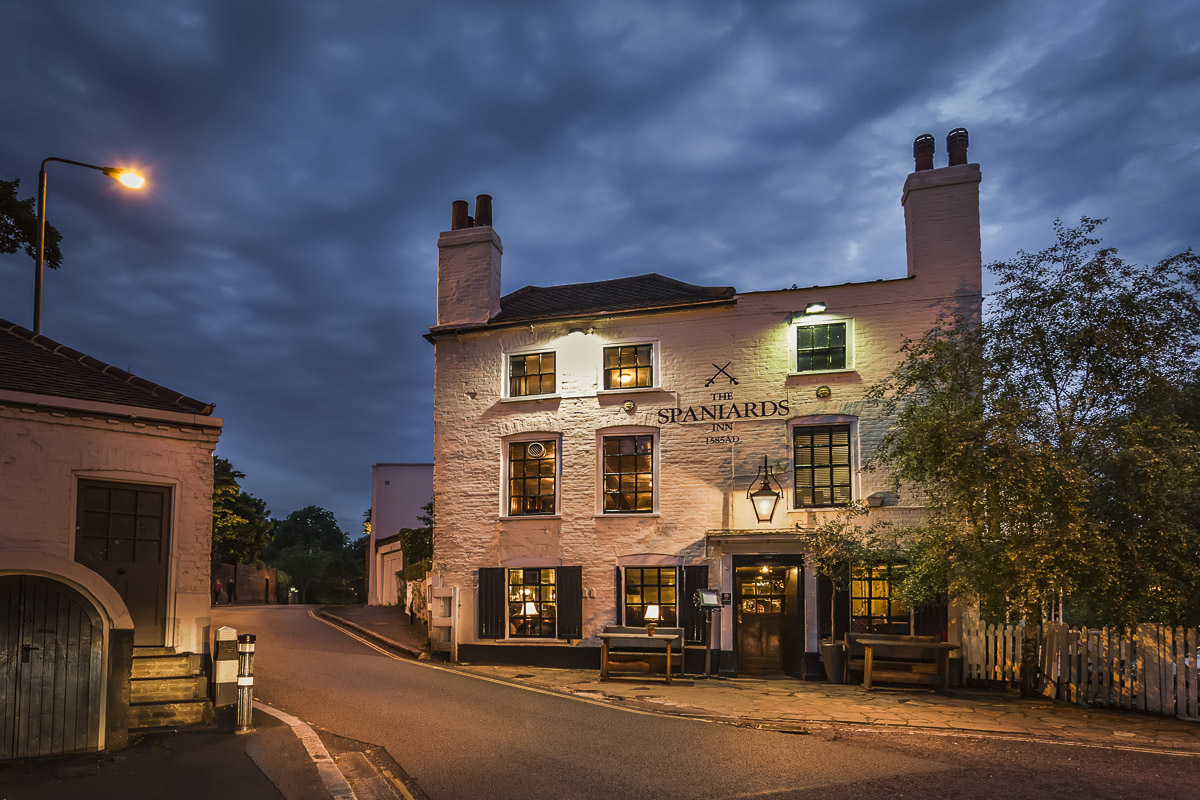
An atmospheric shot of The Spaniards Inn by night (Photo: Jacob Surland via Flickr)
Negotiate the steep steps from Heath Street up to isolated, cobbled Holly Mount and you will find The Holly Bush (22 Holly Mount), a traditional 18th-century wood-panelled pub, originally built by one of the era’s most renowned portrait painters, George Romney. It is particularly popular during winter months thanks to its cosy corners, low-ceilinged bar and roaring open fires, though the promise of Pimm’s and ice-cold lemonade draw summer crowds too. The pub is also well-regarded for its impressive choice of cask ales.
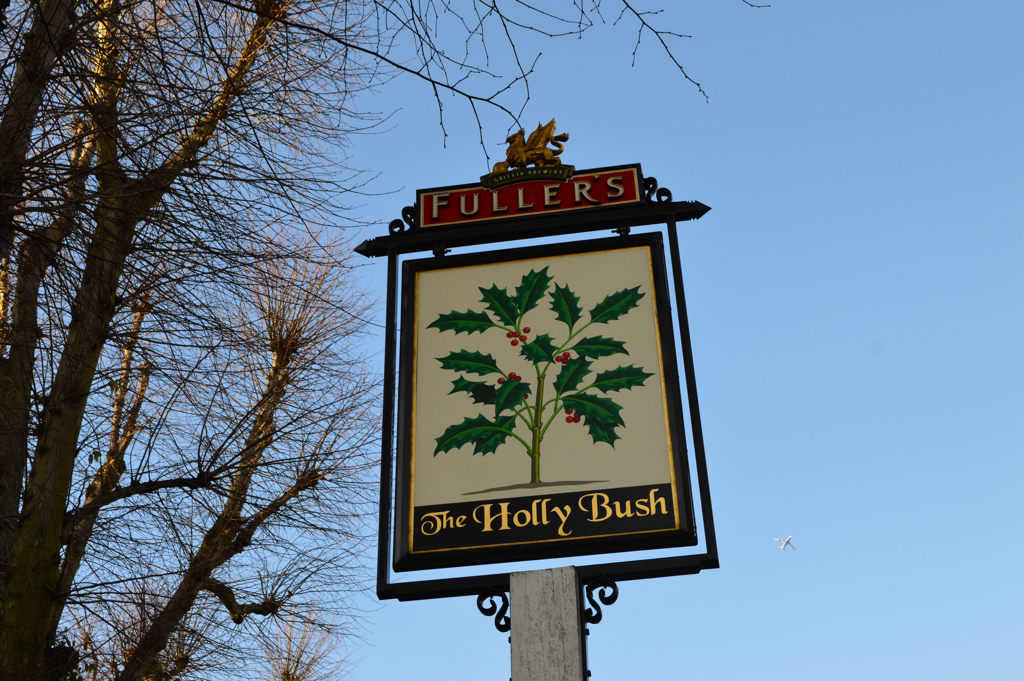
A sign welcomes visitors to the Holly Bush pub (Photo: Matt Brown via Flickr)
Hampstead has a number of other notable outlets that would be worthy inclusions in any London foodie guidebook. For traditional Neapolitan wood-fired oven-cooked pizza, L’antica (66 Heath Street) in Hampstead village is widely considered one of the best pizza joints in the capital. With a cosy, exposed brick and wood setting, the restaurant serves up mouth-watering pasta dishes and the burrata starter and tiramisu dessert are something to behold too.
Sushi fans will find a little known delight in Hampstead, situated almost directly over the road from L’antica. Jin Kichi (73 Heath Street) is a small Japanese restaurant serving delicious grilled skewers cooked over charcoal and basted with sweet, sticky yakitori sauce, along with an extensive menu of fresh, intricately carved sushi, plus shochu cocktails and sake. Those in the know rarely deviate from the Grilled Set Box B with grilled chicken skin on the side.
Sitting about half way down Hampstead High Street, outside the King William IV pub, is an authentic version of a traditional Parisian Street Crêperie and one of London’s most popular food stalls. La Crêperie de Hampstead (77a Hampstead High Street) has become part of the area’s furniture since opening permanently in 1980, with queues lining the street seemingly at any time of day, waiting patiently for their lip-licking offerings. The stall serves a range of sweet and savoury crêpes that have earned it a city-wide reputation – and a highly deserved one too.
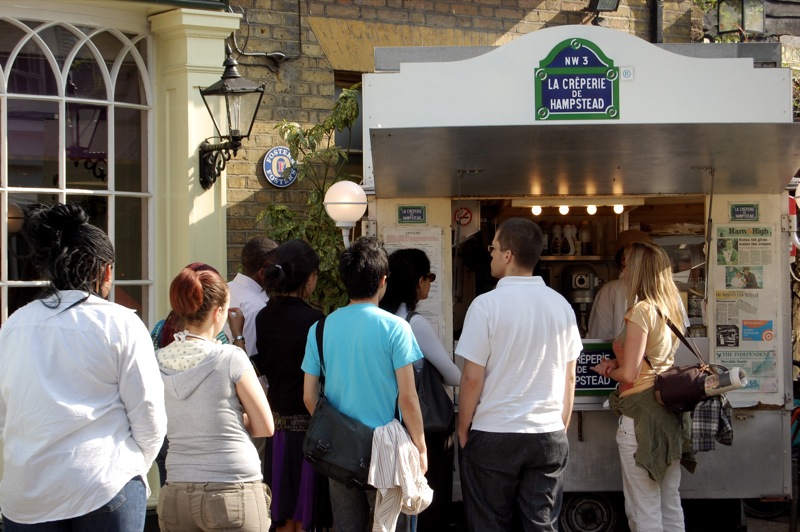
Visitors queue patiently at the perpetually busy Creperie de Hampstead (Photo: Sarah Brottet via Flickr)
Independent Shops
Take a few short steps from the chain store haven of the high street and you’ll find a wealth of independent gems that contribute to Hampstead’s distinct character and charm. Most of these quaint retail outlets can be found tucked away down the area’s myriad side-streets, although there are also a handful on the main parade too.
Button Lady (12 Heath Street) is a fabulous arts and crafts outlet packed full of artisanal goods dedicated to the humble button. The window at the tiny boutique is crammed with buttons of every description, along with small tins, stands and cardboard boxes. Venture inside and you’ll find hats, scarves waistcoats and plenty more besides, all embellished with a myriad of buttons.
Green-fingered visitors should allow time to browse Judy Green’s Garden Store (11 Flask Walk), a popular garden boutique nestled down a small cobbled street just off Hampstead’s main shopping parade. Owned by the eponymous and aptly named Judy Green, a passionate gardener herself, the store offers a diverse range of garden items including pots and plants.
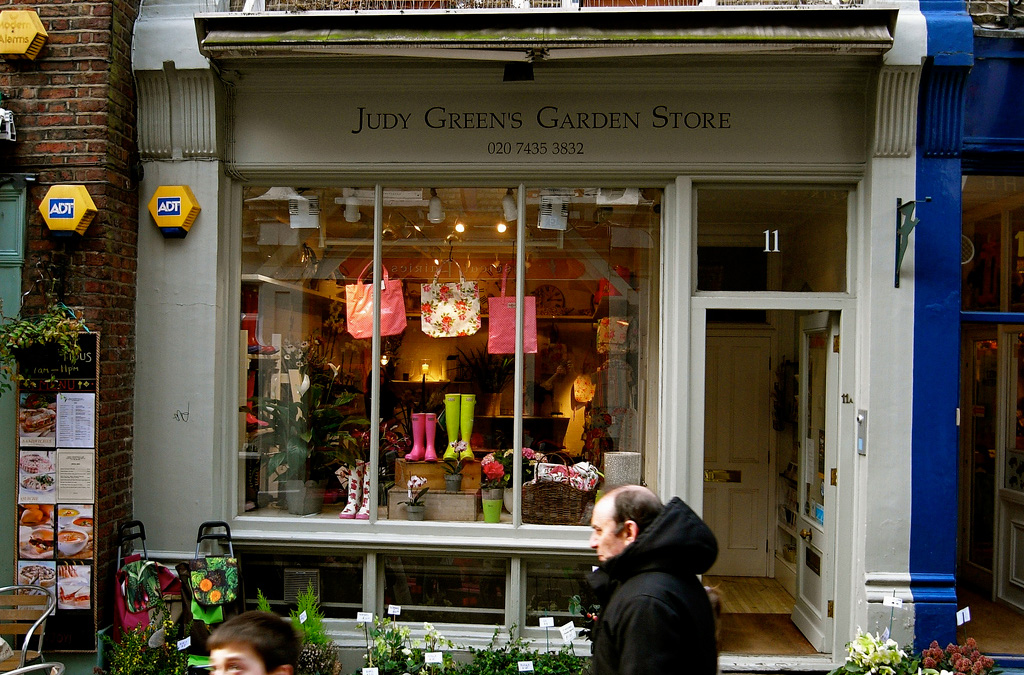
The exterior of Judy Green’s Garden Store on Flask Walk (Photo: Steve Bowbrick via Flickr)
For fashionistas, Cochinechine (74 Heath Street) is where the latest trends and designs in the world of women’s apparel can be found. Eftychia Georgilis’s airy and distinctly feminine boutique houses a wide selection of designer labels along with lesser known brands, set against a backdrop of swinging chandeliers, mix-and-match furniture and whitewashed wooden floors.
Over the past four decades, the Hampstead Antique Emporium (12 Heath Street) has been the destination of choice for those hunting down antique, vintage and handcrafted treasures dating back to the 18th century. Tucked away in a picture-perfect side street, visitors will discover a fascinating labyrinth of over 20 specialists showcasing fine jewellery, toys, furniture, collectibles, garments, ceramics and plenty more besides. The Emporium is open every day except Mondays and the dealers are always happy to share their knowledge over a friendly chat.
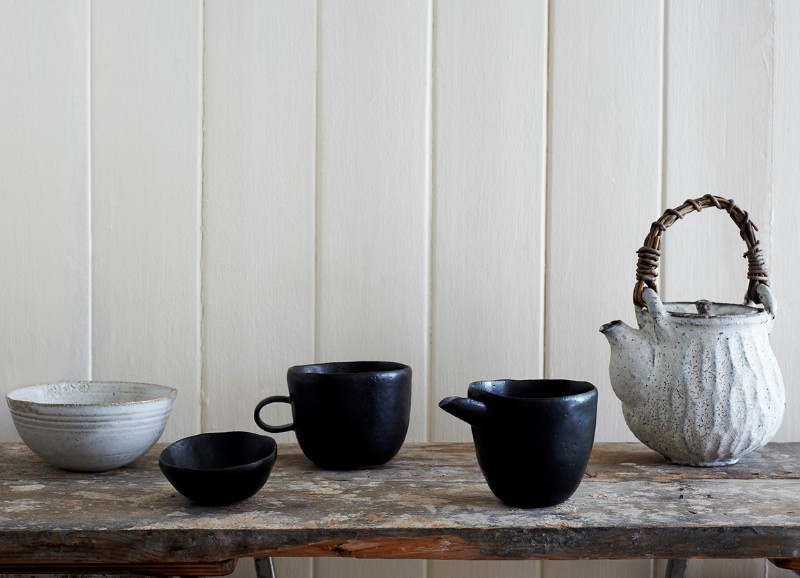
A ceramic tea set at the Hampstead Antique Emporium (Photo: Hampstead Antique Emporium)